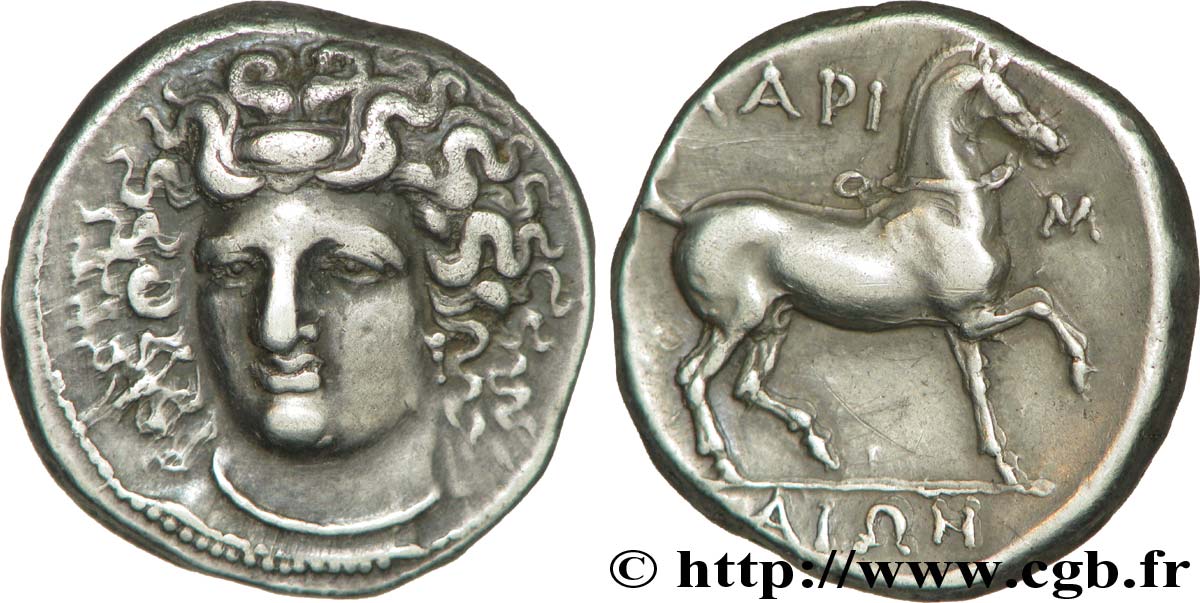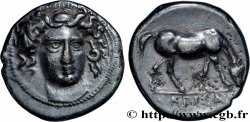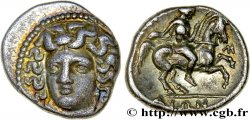v34_0156 - THESSALY - LARISSA Statère ou Didrachme
MONNAIES 34 (2008)
Starting price : 1 600.00 €
Estimate : 2 800.00 €
Realised price : 1 715.00 €
Number of bids : 3
Maximum bid : 2 700.00 €
Starting price : 1 600.00 €
Estimate : 2 800.00 €
Realised price : 1 715.00 €
Number of bids : 3
Maximum bid : 2 700.00 €
Type : Statère ou Didrachme
Date: c. 340 AC
Mint name / Town : Larissa
Metal : silver
Diameter : 23,5 mm
Orientation dies : 11 h.
Weight : 12,12 g.
Rarity : R2
Coments on the condition:
Exemplaire sur un flan bien centré des deux côtés. Portrait magnifique. Revers de style fin, bien venu à la frappe servi par une très jolie patine de collection ancienne avec des reflets mordorés
Catalogue references :
Predigree :
Cet exemplaire provient de la vente Vinchon du 7 novembre 2001, n° 54
Obverse
Obverse legend : ANÉPIGRAPHE.
Obverse description : Tête de la nymphe Larissa de face tournée de trois-quarts à gauche, les cheveux flottants, retenus par un bandeau (ampyx) avec boucles d'oreille et collier.
Reverse
Reverse description : Cheval passant au pas à droite avec la bride sur le cou.
Reverse legend : LARI/S/AIWN.
Reverse translation : (Des Larissiens).
Commentary
Grâce au site internet de C. Lorber et de Shahar, nous pouvons découvrir l’ensemble du monnayage de Larissa qui est l’un des plus fascinants du monnayage grec.








 Report a mistake
Report a mistake Print the page
Print the page Share my selection
Share my selection Ask a question
Ask a question Consign / sell
Consign / sell
 Full data
Full data



